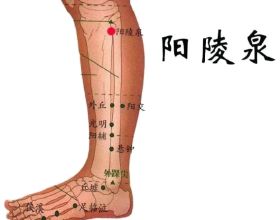在過去很長時間裡,支鏈氨基酸(BCAA)常被視為抵抗肌肉分解的神奇補劑,但隨著近年來相關研究的增多,其神話地位已經越來越受質疑。
發表在2021年2月4日《營養學雜誌》(Journal of Nutrition)上的一項新研究報告稱,補充支鏈氨基酸(BCAA)並不能使肥胖成年人在減肥過程中保持瘦體重。高蛋白飲食可能更有利於保持瘦體重。
這項新的隨機對照減肥試驗包括132名成年人(63名男性和69名女性),他們被隨機分配到三種低熱量飲食中。受試者經歷了16周被規定的飲食和補劑干預,在隨後的8周體重維持期僅規定了補劑。
在經歷16周的能量不足後,三組受試者在體重(7.97%)、脂肪(13.8%)和腰圍(7.27%)上出現了相似的顯著下降。研究發現,在肥胖成年人減肥期間,補充BCAA並不能保持瘦體重。
支鏈氨基酸(亮氨酸、異亮氨酸和纈氨酸)是肌肉蛋白質合成的必需氨基酸。亮氨酸是一種強大的合成代謝觸發器——它是最有效的支鏈氨基酸(BCAA)和mTOR通路的關鍵啟用劑,對促進肌肉生長的肌肉蛋白質合成至關重要。
亮氨酸有許多生長益處:防止肌肉流失,增加胰島素敏感性,促進脂肪代謝和恢復。亮氨酸是開啟mTOR通路的最重要化學物質,所以在運動後攝取亮氨酸可能比攝取BCAA更有效(也更便宜)。
由於在轉運到肌肉細胞方面存在競爭,異亮氨酸和纈氨酸的加入可能會阻礙亮氨酸的作用——在進入細胞和肌肉細胞方面,BCAA共享相同的主動轉運系統。事實上,異亮氨酸和纈氨酸已被證明能抑制亮氨酸的吸收。
氨基酸研究人員羅伯特·R·沃爾夫在《國際運動營養學會雜誌》(2017年)中說:BCAA還與其他氨基酸競爭運輸,包括苯丙氨酸,這種競爭可能影響肌肉內其他EAA的可用性。作為轉運蛋白競爭的結果,單獨使用亮氨酸可能對肌肉蛋白質合成有短暫的刺激作用,BCAA無法引起這種反應。
研究表明,肌肉蛋白質合成的增加依賴於亮氨酸的濃度。亮氨酸刺激肌肉蛋白質自身的合成代謝作用。
2018年10月18日發表在《營養學雜誌》上的一項日本研究發現,與透過一餐補充相同數量的亮氨酸相比,單獨服用亮氨酸補劑可能更有利於肌肉蛋白質的合成代謝。
營養研究表明:基於這些發現,可以推測,與單獨攝取蛋白質或遊離氨基酸相比,從混合飲食中攝取蛋白質可能導致血漿中最大亮氨酸濃度較低。然而,迄今為止,還沒有研究調查攝取混合飲食與攝取相似量遊離氨基酸後氨基酸濃度的變化。
在一項隨機交叉研究中,10名健康的日本年輕男性在不同條件下進行了試驗:單獨攝取2克亮氨酸;含2.15克亮氨酸的混合飲食(不含任何亮氨酸補劑);飯後立即攝取2克亮氨酸;飯後180分鐘攝取2克亮氨酸。
該研究得出結論:基於上述討論,單獨攝取遊離亮氨酸顯著增加血漿亮氨酸濃度。然而,食用含有相同亮氨酸量的混合飲食後,亮氨酸濃度的增加顯著低於單獨攝取遊離亮氨酸。
此外,當在混合飲食後攝取遊離亮氨酸以增加血漿亮氨酸濃度時,儘管總亮氨酸含量加倍,但最大血漿濃度降低。這些結果表明,當以提高血漿氨基酸濃度為目的攝取遊離氨基酸時,需要考慮混合飲食攝取的時間。
為了達到最佳的合成代謝觸發效果,應該在練後餐的前30分鐘服用5克亮氨酸(空腹)或蛋白質奶昔。一項綜合了7項研究結果的薈萃分析(Nutrition, 2017)顯示,BCAA補劑最好在運動後服用,而不是運動前或運動期間。
與隨食物一起服用相比,空腹服用純亮氨酸會使血液水平更好,因為食物可以減緩亮氨酸的吸收。由於轉運肌肉細胞方面的競爭,異亮氨酸和纈氨酸的加入可能會阻礙亮氨酸的作用。
當空腹攝取亮氨酸時,它是開啟蛋白質合成的一個強大代謝開關。亮氨酸可以在訓練後的幾個小時內增加mTOR活性。當在抗阻運動後,和富含必需氨基酸的含蛋白質練後餐前服用亮氨酸,它會促進蛋白質合成,改善恢復,獲得更大的收益。
總之,最近發表在《營養學雜誌》(Journal of Nutrition)上的這項新的隨機對照減肥干預研究證實,BCAA補劑在超重和肥胖成年人減肥過程中並不能保持瘦體重。
高蛋白飲食和氨基酸亮氨酸結合有氧運動和抗阻訓練,可能更有利於在節食期間保持瘦體重。記住,最重要的是,健康的減肥是在保持肌肉質量的情況下逐漸減少脂肪。
參考資料(滑動查閱)
1.Delicia S Q Ooi, Jennifer Q R Ling, Suresh Anand Sadananthan, S Sendhil Velan, Fang Yi Ong, ChinMeng Khoo, E Shyong Tai, Christiani Jeyakumar Henry, Melvin K S Leow, Eric Y H Khoo, Chuen SengTan, Yung Seng Lee, Mary F F Chong, Branched-Chain Amino Acid Supplementation Does Not Preserve Lean Mass or Affect Metabolic Profile in Adults with Overweight or Obesity in a Randomized Controlled Weight Loss Intervention, The Journal of Nutrition 2021; nxaa414, https://doi.org/10.1093/jn/nxaa414
2.Yoshii at al. Nutrients 2018, 10(10), 1543; https://doi.org/10.3390/nu10101543Effect of Mixed Meal and Leucine Intake on Plasma Amino Acid Concentrations in Young Men.
3.Rahimi MH, Shab-Bidar S et al. Branched-chain amino acid supplementation and exercise-inducedmuscle damage in exercise recovery: A meta-analysis of randomized clinical trials. Nutrition 2017.
4.Chad M Kerksick, Colin D Wilborn, Michael D. ISSN Exercise & Sports Nutrition Review Update:Research & Recommendations.
5.Roberts, et al. Journal of the International Society of Sports Nutrition 2018; 15:38.https://doi.org/10.1186/s12970-018-0242-y 1 June 2018
6.Robert R. Wolfe. Branched-chain amino acids and muscle protein synthesis in humans: myth orreality? Journal of the International Society of Sports Nutrition 2017; 14:30.https://doi.org/10.1186/s12970-017-0184-9
7.Szmelcman S, Guggenheim K. Interference between leucine, isoleucine and valine during intestinal absorption. Biochemical Journal 1966; 100(1):7-11.
8.Wilkinson, DJ et al. Effects of leucine and its metabolite beta-hydroxy-beta-methylbutyrateonhumanskeletalmuscleproteinmetabolism. J Physiol 2013; 591, 2911-2923.
9.Cummings NE, Williams EM, Kasza I, Konon EN et al. (2018), Restoration of metabolic health bydecreased consumption of branched‐chain amino acids. J Physiol; 596: 623-645.doi:10.1113/JP275075
10.Duke University. Diabetes researchers find switch for fatty liver disease: Carbs, fats andprotein: One molecule to rule them all? ScienceDaily, 17 May 2018.www.sciencedaily.com/releases/2018/05/180517113847.htm
11.PJ White, RW McGarrah, PA Grimsrud, S Tso, W Yang, JM Haldeman, C Newgard et al. The BCKDHKinase and Phosphatase Integrate BCAA and Lipid Metabolism via Regulation of ATP-Citrate Lyase.Cell Metabolism, 2018; DOI: 10.1016/j.cmet.2018.04.015
12.NutraIngredients-USA.com, December 17, 2017. Nathan Gray. Could dropping specific amino acidsfrom diet be key to weight loss?
13.CB Newgard, J An, JR Bain et al. A Branched-Chain Amino Acid-Related Metabolic Signature thatDifferentiates Obese and Lean Humans and Contributes to Insulin Resistance Cell Metab 2009April; 9(4): 311-326. doi:10.1016/j.cmet.2009.02.002
14.Zheng Y, Li Y, Qi Q et al. Cumulative consumption of branched-chain amino acids and incidence of type 2 diabetes. Int J Epidemiol 2016; 45: 1482-92.
15.Isanejad M, LaCroix AZ, Thomson CA et al. Branched-chain amino acid, meat intake and risk oftype 2 diabetes in the Women’s Health Initiative. Br J Nutr 2017; 117:1523-30.
16.Newgard CB, An J, Bain JR et al. A branched-chain amino acid-related metabolic signature thatdifferentiates obese and lean humans and contributes to insulin resistance. Cell Metab 2009; 9:311-26
17.Tremblay F, Krebs M, Dombrowski L et al. Overactivation of S6 kinase 1 as a cause of humaninsulin resistance during increased amino acid availability. Diabetes 2005; 54: 2674-84.
18.Tremblay F, Krebs M, Dombrowski L et al. Overactivation of S6 kinase 1 as a cause of humaninsulin resistance during increased amino acid availability. Diabetes 2005; 54: 2674-84.
19.Lee CC, Watkins SM, Lorenzo C et al. Branched-chain amino acids and insulin metabolism: TheInsulin Resistance Atherosclerosis Study (IRAS). Diabetes Care 2016; 39: 582-8.
20.Yoon M-S. The emerging role of branched-chain amino acids in insulin resistance and metabolism. Forum Nutr 2016; 8: 405-17.
21.Abdul-Ghani MA, Tripathy D and DeFronzo RA. Contributions of beta-cell dysfunction and insulin resistance to the pathogenesis of impaired glucose tolerance and impaired fasting glucose. Diabetes Care 2006; 29:1130-9.
22.Jang C, Oh, SF, et al A branched-chain amino acid metabolite drives vascular fatty acidtransport and causes insulin resistance. Nat Med 22, 421-426.
23.Sara B Seidelmann, Brian Claggett, Susan Cheng, Mir Henglin, Amil Shah, Lyn M Steffen, Aaron R Folsom, Eric B Rimm, Walter C Willett, Scott D Solomon, Dietary carbohydrate intake andmortality: a prospective cohort study and meta-analysis. The Lancet Public Health 2018; ISSN2468-2667, https://doi.org/10.1016/S2468-2667(18)30135-X.
24.Zhaoping Li, Professor of Medicine, UCLA, US National Library of Medicine www. ClinicalTrials.gov. Identifier: NCT02684565 Last Update Posted: February 12, 2018https://clinicaltrials.gov/ct2/show/NCT02684565
25.Lotta LA, Scott RA, Sharp SJ, Burgess S, Luan J, et al. (2016) Genetic Predisposition to anImpaired Metabolism of the Branched-Chain Amino Acids and Risk of Type 2 Diabetes: A MendelianRandomisation Analysis. PLOS Medicine 13(11):e1002179.https://doi.org/10.1371/journal.pmed.1002179
26.Avogaro A and Bier DM (1989) Contribution of 3-hydroxyisobutyrate to the measurement of 3-hydroxybutyrate in human plasma: comparison of enzymatic and gas-liquid chromatography-massspectrometry assays in normal and in diabetic subjects. J Lipid Res 30; 1811-1817
27.Giesbertz P, Padberg I et al. (2015) Metabolite profiling in plasma and tissues of ob/ob anddb/db mice identifies novel markers of obesity and type 2 diabetes. Diabetologia 58; 2133-2143.
28.Insulin Resistance, And What May Contribute to It, by Lila Abassi on March 14, 2016. AmericanCouncil on Science & Health. https://www.acsh.org/news/2016/03/14/branched-chain-amino-metabolite-a-culprit-in-insulin-resistance
29.Lydia-Ann LS Harris, Gordon I Smith, Bruce W Patterson, Raja S Ramaswamy et al. Alterations in 3-Hydroxyisobutyrate and FGF21 Metabolism Are Associated With Protein Ingestion-Induced Insulin Resistance. Diabetes 2017; 66:1871-1878 https://doi.org/10.2337/db16-1475
30.Mardinoglu, Adil et al. Elevated Plasma Levels of 3-Hydroxyisobutyric Acid Are Associated With Incident Type 2 Diabetes. EBioMedicine, Volume 27; 151-155, Jan. 2018.
31.Ulrika Andersson-Hall, Carolina Gustavsson, Anders Pedersen, Daniel Malmodin, Louise Joelsson, and Agneta Holmäng. Higher Concentrations of BCAAs and 3-HIB Are Associated with Insulin Resistance in the Transition from Gestational Diabetes to Type 2 Diabetes. Journal of Diabetes Research, vol. 2018, Article ID 4207067, 12 pages, 2018. https://doi.org/10.1155/2018/4207067.
32.Macotela Y, Emanuelli B, Bang AM et al. (2011) Dietary leucine - an environmental modifier ofinsulin resistance acting on multiple levels of metabolism. PLoS One 6; e21187.
33.Cunxi Nie, Ting He, Wenju Zhang, Guolong Zhang, Xi Ma. Branched Chain Amino Acids: BeyondNutrition Metabolism. Int J Mol Sci 2018 Apr; 19(4): 954. Published online 2018 Mar 23. doi:10.3390/ijms19040954
34.Y Zhang, K Guo, RE LeBlanc, D Loh, GJ Schwartz and Y Yu. Increasing Dietary Leucine IntakeReduces Diet-Induced Obesity and Improves Glucose and Cholesterol Metabolism in Mice viaMultimechanisms. Diabetes Jun 2007; 56 (6) 1647-1654; DOI: 10.2337/db07-0123
35.Deirdre K Tobias, Clary Clish, Samia Mora, Jun Li, Liming Liang, Frank B. Hu, JoAnn E. Manson, Cuilin Zhang. Dietary Intakes and Circulating Concentrations of Branched-Chain Amino Acids in Relation to Incident Type 2 Diabetes Risk Among High-Risk Women with a History of Gestational Diabetes Mellitus. Clinical Chemistry Aug 2018; 64 (8) 1203-1210; DOI:10.1373/clinchem.2017.285841
36.McCormack S.E, Shaham O, McCarthy MA, Deik AA, Wang TJ, Gerszten RE, Clish CB, Mootha VK,Grinspoon SK and Fleischman A. (2013), Branched‐chain amino acids and IR in children. PediatricObesity, 8: 52-61. doi:10.1111/j.2047-6310.2012.00087.x.
37.Sina S Ullrich, Penelope CE Fitzgerald, Gudrun Schober, Robert E Steinert, Michael Horowitz,Christine Feinle-Bisset; Intragastric administration of leucine or isoleucine lowers the bloodglucose response to a mixed-nutrient drink by different mechanisms in healthy, lean volunteers.The American Journal of Clinical Nutrition, Volume 104, Issue 5, 1 November 2016, Pages 1274-
1284, https://doi.org/10.3945/ajcn.116.140640.
38.Haufe S. et al. Branched-chain and aromatic amino acids, insulin resistance and liver specific ectopic fat storage in overweight to obese subjects. Nutrition, Metabolism and Cardiovascular Diseases, Volume 26, Issue 7, 637-642
39.Li H, Xu M, Lee J, He C and Xie Z. (2012). Leucine supplementation increases SIRT1 expressionand prevents mitochondrial dysfunction and metabolic disorders in high-fat diet-induced obesemice. American Journal of Physiology - Endocrinology and Metabolism, 303(10), E1234-E1244.http://doi.org/10.1152/ajpendo.00198.2012
40.Chunzi Liang, Benjamin J Curry, Patricia L Brown and Michael B. Zemel. Leucine ModulatesMitochondrial Biogenesis and SIRT1-AMPK Signaling in C2C12 Myotubes. Journal of Nutrition andMetabolism, vol. 2014, Article ID 239750, 11 pages, 2014. https://doi.org/10.1155/2014/239750.
41.Binder E, Bermúdez-Silva FJ, André C, Elie M, Romero-Zerbo SY, et al. Leucine SupplementationProtects from Insulin Resistance by Regulating Adiposity Levels (2013). Leucine SupplementationProtects from Insulin Resistance by Regulating Adiposity Levels. PLOS ONE 8(9): e74705.https://doi.org/10.1371/journal.pone.0074705
42.Banerjee, Jheelam et al. Activation of the AMPK/Sirt1 pathway by a leucine-metformin combination increases insulin sensitivity in skeletal muscle, and stimulates glucose and lipid metabolism and increases life span in Caenorhabditis elegans. Metabolism - Clinical and Experimental, Volume 65, Issue 11, 1679-1691
43.Jiao J, Han S-F, Zhang W, Xu J-Y, Tong X, Yin X-B, Qin L-Q (2016). Chronic leucinesupplementation improves lipid metabolism in C57BL/6J mice fed with a high-fat/cholesterol diet. Food & Nutrition Research, 60, 10.3402/fnr.v60.31304. http://doi.org/10.3402/fnr.v60.31304
44.Cholsoon Jang, Sungwhan F Oh, Shogo Wada, Glenn C Rowe, Laura Liu, Mun Chun Chan, James Rhee, Atsushi Hoshino, Boa Kim, Ayon Ibrahim, Luisa G Baca, Esl Kim, Chandra C Ghosh, Samir M Parikh, Aihua Jiang, Qingwei Chu, Daniel E Forman, Stewart H Lecker, Saikumari Krishnaiah, Joshua D Rabinowitz, Aalim M Weljie, Joseph A Baur, Dennis L Kasper & Zoltan Arany. Published: 07 March 2016. A branched-chain amino acid metabolite drives vascular fatty acid transport and causes insulin resistance. Nature Medicine, volume 22, pages 421-426 (2016)
45.D’Antona G, Ragni M, Cardile A, Tedesco L, Dossena M, Bruttini F et al. (2010). Branched-chain amino acid supplementation promotes survival and supports cardiac and skeletal musclemitochondrial biogenesis in middle-aged mice. Cell Metab 12, 362-372. doi:10.1016/j.cmet.2010.08.016
46.Szmelcman S, Guggenheim K. Interference between leucine, isoleucine and valine during intestinal absorption. Biochemical Journal 1966; 100(1):7-11.
47.Robert R. Wolfe. Branched-chain amino acids and muscle protein synthesis in humans: myth orreality? Journal of the International Society of Sports Nutrition 2017; 14:30https://doi.org/10.1186/s12970-017-0184-9
48.L Deldicque, C Sanchez Canedo and S Horman. Antagonistic effects of leucine and glutamine on the mTOR pathway in myogenic C2C12 cells. Amino Acids, 2008; Volume 35, Number 1, Page 147
49.Amy Hector, Stuart M. Phillips. Protein Recommendations for Weight Loss in Elite Athletes: AFocus on Body Composition and Performance. Int J Sport Nutr Exerc Metab 2017
50.Rahimi MH, Shab-Bidar S, Mollahosseini M, Djafarian K. Nutrition 2017. Leucine, Not TotalProtein, Content of a Supplement Is the Primary Determinant of Muscle Protein Anabolic Responses in Healthy Older Women. The Journal of Nutrition, nxy091, June 13, 2018
51.Branched-chain amino acid supplementation and exercise-induced muscle damage in exerciserecovery: A meta-analysis of randomized clinical trials.
52.Jiao J, Han S.F, Zhang W, Xu JY, Tong X, Yin XB, Yuan LX, Qin LQ (2016). Chronic leucine supplementation improves lipid metabolism in C57BL/6J mice fed with a high-fat/cholesterol diet. Food & Nutrition Research, 60, 31304. doi:10.3402/fnr.v60.31304
53.Macotela Y, Emanuelli B, Ba˚ng AM, Espinoza DO, Boucher J, Beebe K, et al. Dietary leucine an environmental modifier of insulin resistance acting on multiple levels of metabolism. PLoS One 2011; 6: e21187.
54.Zhang Y, Guo K, LeBlanc RE, Loh D, Schwartz GJ, Yu YH. Increasing dietary leucine intake reduces diet-induced obesity and improves glucose and cholesterol metabolism in mice via multimechanisms. Diabetes 2007; 56: 164754.
55.Khan M, Joseph F. Adipose tissue and adipokines: the association with and application of adipokines in obesity. Scientifica (Cairo) 2014; 2014: 328592
56.Zemel MB, Bruckbauer A. Effects of a leucine and pyridoxine containing nutraceutical on fat oxidation, and oxidative and inflammatory stress in overweight and obese subjects. Nutrients 2012; 4: 52941
57.Ricoult SJ, Manning BD. The multifaceted role of mTORC1 in the control of lipid metabolism. EMBO Rep 2013; 14: 24251
58.Freudenberg A, Petzke KJ, Klaus S. Comparison of high protein diets and leucine supplementation in the prevention of metabolic syndrome and related disorders in mice. J Nutr Biochem 2012; 3:152430.
59.Vaughan RA, Garcia-Smith R, Gannon NP, Bisoffi M, Trujillo KA, Conn CA. Leucine treatment enhances oxidative capacity through complete carbohydrate oxidation and increased mitochondrial density in skeletal muscle cells. Amino Acids 2013; 45: 90111.
60.Zhang Y et al. (2007) Increasing dietary leucine intake reduces diet-induced obesity and improves glucose and cholesterol metabolism in mice via multimechanisms. Diabetes 56(6):1647-1654
61.Okekunle AP, Zhang M, Wang Z. et al. Dietary branched-chain amino acids intake exhibited a different relationship with type 2 diabetes and obesity risk: a meta-analysis. Acta Diabetol(2018). https://doi.org/10.1007/s00592-018-1243-7
62.Binder E, Bermúdez-Silva FJ, André C, Elie M, Romero-Zerbo SY, et al. Leucine Supplementation Protects from Insulin Resistance by Regulating Adiposity Levels (2013). PLOS ONE 8(9): e74705. https://doi.org/10.1371/journal.pone.0074705
63.Binder E, Bermúdez‐Silva FJ, Elie M, Leste‐Lasserre T, Belluomo I, Clark S, Duchampt A,Mithieux G and Cota D. (2014) Leucine supplementation modulates fuel substrates utilization and glucose metabolism in previously obese mice. Obesity, 22: 713-720. doi:10.1002/oby.20578
64.Li H, Xu M, Lee J, He C and Xie Z (2012). Leucine supplementation increases SIRT1 expression and prevents mitochondrial dysfunction and metabolic disorders in high-fat diet-induced obese mice. American Journal of Physiology. Endocrinology and Metabolism, 303(10), E1234-44.
65.Pedroso JA, Zampieri TT and and Donato J. (2015). Reviewing the Effects of L-LeucineSupplementation in the Regulation of Food Intake, Energy Balance, and Glucose Homeostasis.Nutrients, 7 (5), 3914-37. https://dx.doi.org/10.3390%2Fnu7053914
66.Caoileann H Murphy, Nelson I Saddler, Michaela C Devries, Chris McGlory, Steven K Baker and Stuart M Phillips. Leucine supplementation enhances integrative myofibrillar protein synthesis in free-living older men consuming lower- and higher-protein diets: a parallel-group crossover study. The American Journal of Clinical Nutrition, Volume 104, Issue 6, 1 December 2016, Pages 1594-1606, https://doi.org/10.3945/ajcn.116.136424
67.Yadao DR, MacKenzie S and Bergdahl A. (2018) Reducing branched‐chain amino acid intake to reverse metabolic complications in obesity and type 2 diabetes. J Physiol, 596: 3455-3456.doi:10.1113/JP276274























